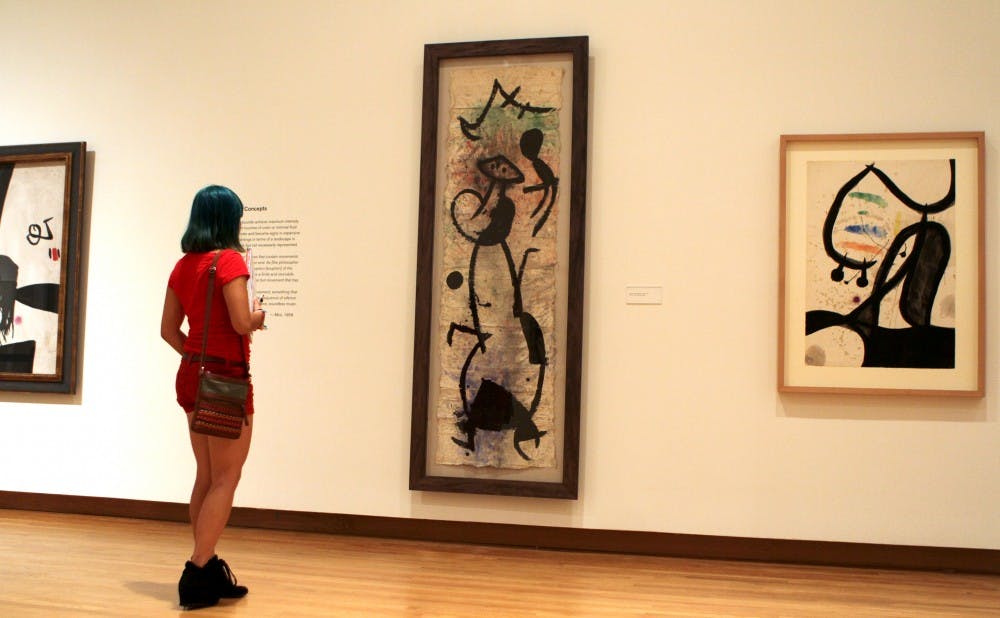My eyes widen, blinking at the enormity of the painting before me which engulfs both the gallery wall and the relatively tiny stature of my being. For an unconscious second, my breath pauses as the canvas’ enormity translates into a physical weight upon my body, stapling my feet to the concrete floor. The only movement it allows me is that of my eyes, which dart from one end of the canvas to the other, following the thick black line which races across. My eyes dart from one end to the other as if challenging the brushstroke’s liveliness, yet unable to deny its energy.
In examining a blotch of paint at one end of the line, my head leans to the side, crooked at an angle that would seem possible only if gravity itself suddenly displayed a preference for one side of my body over the other.
My arms cross, as I try to make sense of the Western blot-esque mark; my arms rest on my hips, as I try to make sense of the mark; my arms fall to my sides and my fingers engage in a tapping motion as I try to make sense of the mark.
My feet unglue themselves and take a few cautious steps backward, naively hoping that these few steps taken away from the painting will be able to exactly traverse the distance between blankness of thought and enlightenment of understanding.
In trying to be fair, I then take a few lunges forward, giving my nose the opportunity to smell the dried paint and nearly ruin the integrity of the painting, while unintentionally also encouraging a few suspicious glances from the nearby security guard.
_______
Such is a typical experience not only when viewing the paintings of Miró, but also when viewing any painting at all. The movements we take in trying to make sense of art are largely universal.
In our observation of art and in our efforts to interpret and understand art, we engage in a reciprocated dance with the artwork—an interactive, robust, full-body experience that not only consciously increases our awareness of the artwork itself, but also unconsciously increases our sensitivity to our own bodies and our understanding of ourselves.
Looking at art, parts of our body slow down—our steps, our heart rate, our breath—while other parts speed up—our eyes, our heart rate, our breath—and other parts sway back and forth, and other parts simply pause.
But this is not a private dance. Rather, our personal slow dance with art is one of call-and-response. We try, through our physical movements, to achieve an intimate understanding of the work and to discover our personal relationship with the work. Through moving our body to examine a work of art from all angles and from all perspectives, we gain an intimacy with the art that cannot be found in any other way.
With every backward step we take away from a painting, our relationship with the painting takes a matching step forward. With every step and every movement on our part, we become more and more in-tune with the elements of the artwork, and become ever more connected and in sync as partners in this dance.
This union is what I find to be the essence of interpretative dance such as that performed at Le Bal Miró—it is not merely the inspiration art can offer to dance, but the necessity of engaging in dance to better understand art.
Get The Chronicle straight to your inbox
Signup for our weekly newsletter. Cancel at any time.

